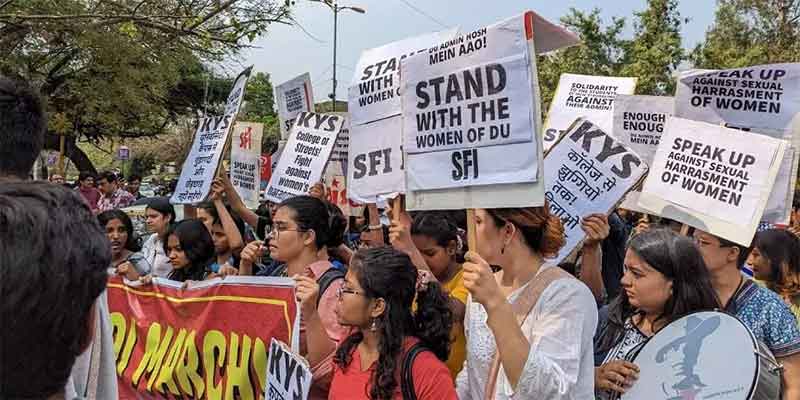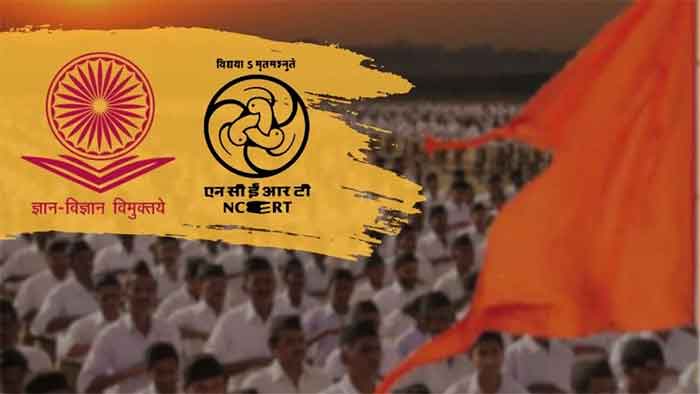
Bahutva Karnataka (BK), a platform of organizations committed to justice, harmony and the promotion of constitutional values, is releasing a series of ‘Guarantee Check’ reports juxtaposing the Central Government’s official claims with evidence from credible (oftentimes official) sources. BK released their first report in this series, titled ‘Employment, Wages and Inequality’, on 11th March, 2024. The latest report, titled ‘Education’, dropped on 17th April 2024. It deals with how well the Central Government has fared against their own promises and very often by their own reckoning, through an analysis of the Government’s own data and publicly available financial figures.
The issue that stands out most starkly is the massive underinvestment in education at the Centre. The funding that the Central Government apportions to its Ministry of Education (MoE) is so pitifully small that even the education budget of the city of New York is many times higher. Despite its repeated promises to invest 6% of GDP in its citizens’ education, the MoE has a budget that’s equivalent to approximately 0.4% of GDP (about a third of the city of New York’s education spend), which amounts to a highly inadequate contribution of around 700 Rs. per Indian per year (much lower than Brazil or South Africa, fellow BRICS nations, spend on their citizens). The Centre’s contributions fall far short of the States’ (who altogether contribute around 3.4% of GDP). PM Modi had been stridently critical of the low education spend in the country in 2013 when in the opposition. He had then suggested that overall investment in education should be 7% of GDP and not around the 4% that it was (and where it still remains thanks to the Centre’s unwillingness to pony up the money).
The results of the underinvestment are there for all to see. 1 out of 2 senior school students in our country cannot divide a 3 digit number by a single digit number. 1 out of 4 cannot read at grade 2 levels in their mother tongues. 1 in 3 cannot even subtract. And it gets worse. The World Bank’s Human Capital Index score for India reveals that 35% of Indians are at risk of cognitive and physical impairments as a result of poor Early Childhood Care and Education (ECCE), but the amount that India allocates to ECCE is 16 times less than several other countries as a percentage of GDP. Likewise in higher education, half the graduates are found to be unemployable, and the percentage of engineering graduates who are unemployed upon graduation has been increasing. Despite this, the government has reduced its investment in higher education in its 2024 budget by 18%.
Now the situation for students belonging to underprivileged castes is definitely worse, because despite multiple promises of spending on post-matriculation scholarships for students considered to belong to SC, ST or OBC groups, the reality is that the scholarships are not being allocated the promised money. Only half the promised amounts were paid out in 2021. Only a quarter was paid out in 2023. Even the full amount would have anyway only been a paltry 1000 Rs. per student per month. To add to their woes, students can only avail these benefits if their family income can be proven to fall below a cutoff of 2.5 lakhs per annum (or 1 lakh in some cases), compared to the 8 lakh income cutoff limit for EWS
beneficiaries (the subject of a pointed question in parliament). Partly as a consequence the dropout rates in these groups are tremendously high (contributing to more than half the dropouts across institutions of higher education). Moreover, abuse and harassment continues with students reporting being singled out for caste reasons in many institutions of higher education, with caste privilege being signaled by new vegetarian sections in messes in many IITs. Meanwhile students from historically oppressed communities have died or been injured for drinking water, for touching things, for supplying incorrect answers and conversely even for studying well, and the number of caste atrocities recorded annually has increased 50% from 2014 to 2022, a state of affairs that the PM has maintained a deafening silence on despite calls to speak out about it.
On the subject of regional languages, the Centre allocates Rs. 200 crores per year for the promotion of Sanskrit but only Rs. 10 crores per year for all regional languages combined. Though the three-language formula was supposed to allow for Hindi to be taught as a third language in South India in return for ‘modern Indian languages’ (regional languages) being taught in North India, there have been no attempts to promote Southern or other regional languages in the North. On the contrary, BJP ruled states have made Sanskrit compulsory as the third language, shutting out Southern languages entirely. Moreover, the Centre continues to appease Hindi, with the naming of laws in Hindi and the use of Hindi now in preparing cabinet agendas disadvantages Southern law students and civil service aspirants.
Moreover, the naming of prestigious scientific and engineering projects (such as Gaganyaan and Chandrayaan) solely using Hindi-belt names again pointedly excludes Southern languages despite their disproportionately high tax contributions to these projects.
Meanwhile, the Centre has dropped subjects such as Darwin’s theory of evolution, the periodic table, and the Pythagorean theorem from 10th Std. textbooks, with a BJP Minister of State for Higher Education famously saying “No one ever saw an ape turning into a human being”. The BJP Government in Madhya Pradesh has instead chosen to invest in astrology courses with the state’s education minister saying “Our country’s ancient culture is getting affected by modernity. Astrology impacts human lives, the courses of events and climate change. We need to study astrology to understand these changes.” At the same time, 1 in 4 government schools in Madhya Pradesh have been closed down, disproportionately affecting the smaller schools serving tribal districts. All over the country, 1 in 6 teaching posts (about 10 lakh in all) lies vacant, with the percentage going up to 42% for reserved teaching openings in central universities. Innumerable scholars have been imprisoned, shot or suspended for their views (again with no condemnation whatsoever from the PM, and some still remain in jail).
Have things changed this year? Hardly, and the government has been quite misleading there. For instance, after the 2024 budget, the Government played up a claim that this year’s education budget had the highest ever budget for school education. It turns out that the number was only 0.7% more than last year’s (in other words, if you accounted for inflation, the allocation was less than last year). And in light of the noise made about this, it was conveniently forgotten that the size of the overall education budget has gone down 7% and the allocation for higher education has decreased 18%. In reality the budget for the Central Ministry of Education hovers at around 0.4% of GDP once again.
Questions and Answers
1. What is the matter of critical importance NOW that necessitates this report?
The national elections are around the corner, and it is important for the electorate to be able to make an informed decision. The only viewpoint that seems to be getting through is the Government’s and anyone who looks beyond it finds that it doesn’t always tell the whole story. A case in point is how the Government was able to sell the 2024 education budget as a budget that was very school education friendly. It was able to do so by focusing on numbers that had not been inflation-adjusted and so keep the cut-backs to education from the public eye. Similarly there have been repeated claims that the government is ‘promoting’ regional languages, whereas the reality is that they have been disincentivizing, discouraging and underfunding regional languages and making it impossible to learn a regional language as a third language in the North of the country. Similarly despite the claims of respect for Ambedkar and for the people he represented, the reality shows blatant discrimination against them in education and a very pointed refusal by those in power to take their part. So the report brings some balance to the discussion by showing with the government’s own data where there may have been empty promises and misleading statements made and foisted onto the general public.
2. What is the main point where the promises made by the Government diverge from reality
The key difference is in the amount of funding being allocated to education. Despite the BJP Manifesto in 2014 promising to bring education funding up to the 6% recommended as a minimum by various studies, despite PM Modi having sought a 7% of GDP education budget back in 2013 when he was the CM of Gujarat, the reality is that the central government has not been paying its share into the education pool. While state governments have been contributing the lion’s share to the education kitty (as much as 10 times what the central government is contributing by some reckonings, at the very least three quarters of the total), the central government is really contributing something like 0.4% of the budget.
3. So does India have the money to spend more on education?
Yes. The central government spends many times the amount it allocates to education on things like debt forgiveness to its corporate friends (about 10 times its education budget) and on arms procurement (imports of weapons from the USA alone amounts to many times the education budget).
4. Is this report available to the general public?
Yes! The report is fully in the public domain and can be downloaded from at the Bahutva Karnataka website at https://bahutvakarnataka.wordpress.com/guaranteechecks/#education














































